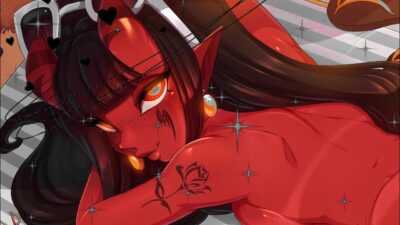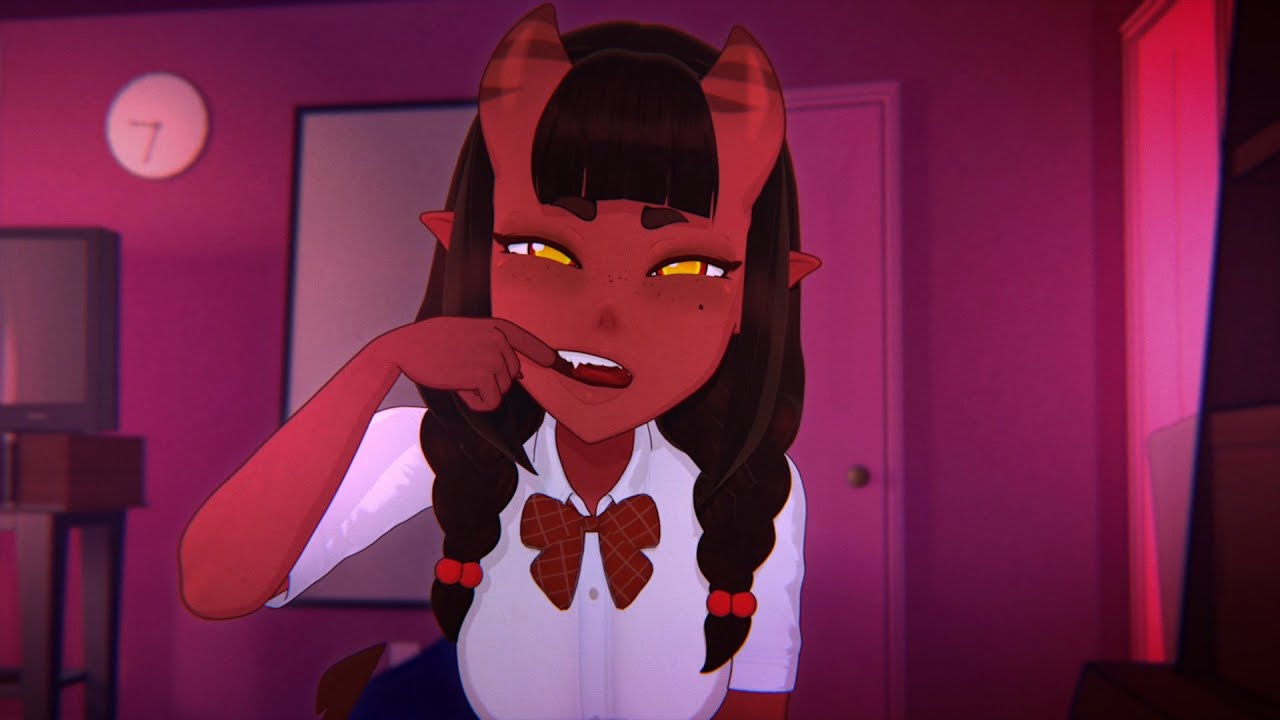In the realm of fantasy and supernatural folklore, the figure of the succubus stands as a timeless symbol of temptation, mystery, and power. Among the
In the realm of fantasy and supernatural folklore, the figure of the succubus stands as a timeless symbol of temptation, mystery, and power. Among the many renditions of this archetype, Meru the Succubus shines as a compelling modern iteration that blends classic demonology with fresh character depth. This article will explore Meru’s origins, personality, abilities, symbolic significance, and why she captivates fans worldwide.
Must visit: trustedhealthcare

Succubi in Myth and Folklore: Setting the Stage
Before diving into Meru’s character, it’s important to understand the succubus archetype. The succubus has roots in many cultures but became particularly prominent in medieval European folklore. These female demons were believed to seduce men in their sleep, feeding off their life essence and leading to physical and spiritual deterioration.
Originally, succubi symbolized danger and moral warning—temptation that could lead men astray. Over time, however, this image softened, particularly in literature and media. Succubi became more nuanced, sometimes embodying tragedy, loneliness, or even misunderstood innocence. This evolution sets the context for characters like Meru, who blend seduction with emotional complexity.
Who is Meru the Succubus?
Meru the Succubus is a fictional character developed primarily through modern fantasy genres such as anime, manga, indie games, and fan fiction. Unlike the purely malevolent succubus of old, Meru is typically portrayed with a layered personality, mixing playfulness, charm, vulnerability, and at times, profound loneliness.
Her origin story varies by adaptation, but Meru is usually depicted as a young demon navigating the complexities of her identity—torn between her inherent nature and a desire for connection or understanding with humans. This internal conflict adds a fresh layer to the succubus myth, making her more than just a symbol of temptation.
Physical Appearance: The Allure of Meru
Meru’s design is critical to her appeal. She is usually depicted with iconic succubus features but with unique stylistic flourishes:
- Horns: Small, curved, or twisted, indicating her demonic heritage.
- Wings: Bat-like but sometimes more delicate or stylized, symbolizing her supernatural abilities.
- Tail: A slender, pointed tail often used expressively to convey mood or emotion.
- Eyes: Large and expressive, capable of reflecting a wide emotional spectrum—teasing, sad, or curious.
- Attire: Often a blend of gothic, fantasy, and seductive fashion elements, from corsets and lace to magical robes or armor pieces.
This combination creates a character who is both visually captivating and symbolically rich.
Powers and Abilities: What Makes Meru Unique?
Meru possesses many powers traditionally attributed to succubi but is often given additional abilities to enrich her role in stories:
- Seduction and Charm: Naturally, Meru can enchant and captivate others, often bending their will or emotions to her favor.
- Dream Manipulation: She can enter dreams, influencing them to communicate, manipulate, or comfort.
- Energy Drain: A hallmark succubus trait, used variably from benign to threatening depending on the narrative.
- Shape-shifting: Sometimes Meru can alter her form to suit her needs, whether to disguise herself or to express different facets of her identity.
- Magic: In many depictions, Meru wields magical powers beyond seduction, such as casting spells or illusions.
These abilities make her a formidable character, capable of influencing both the physical and emotional worlds.
Personality Traits: Beyond the Demon
Meru stands out due to her multi-dimensional personality, often crafted with care to challenge the one-note portrayal of succubi:
- Playful and Mischievous: Meru enjoys teasing and playing with those around her but rarely with cruel intent.
- Curious: She has a fascination with humans, their emotions, and their world, which sometimes leads to awkward or tender moments.
- Empathetic: Despite her demonic nature, she can form genuine bonds and display compassion.
- Conflicted: She struggles with her identity as a demon and her desire to be understood or accepted.
- Independent: Meru resists control from others, valuing her freedom above all.
This rich personality makes her relatable and interesting, offering endless storytelling possibilities.
Symbolism and Themes Associated with Meru
Meru represents several powerful themes that resonate across cultures and genres:
1. Duality of Nature
Meru embodies the conflict between light and darkness, innocence and corruption, human and demon. This duality highlights the complexity of identity and the struggle to reconcile opposing aspects of the self.
2. Desire and Temptation
As a succubus, Meru is an embodiment of desire—both a literal seductress and a symbol of the temptation to explore forbidden or repressed emotions and experiences.
3. Loneliness and Connection
Many narratives explore Meru’s loneliness as a demon separated from humanity, and her yearning for connection, making her a poignant figure of isolation and hope.
4. Power and Vulnerability
Meru’s powers make her formidable, yet her emotional vulnerabilities reveal her humanity (or something close to it), providing a balance that enriches her character.
Meru in Modern Media: Where to Find Her
Meru the Succubus is popular in various modern fantasy contexts:
- Anime and Manga: She sometimes appears as a character in supernatural or fantasy genres, either as a main or supporting figure.
- Video Games: Meru is often included as a character in indie games or fantasy RPGs, where her abilities and personality are explored interactively.
- Fan Art and Fiction: The character is a favorite in online communities, inspiring countless artworks, stories, and roleplay scenarios.
- Cosplay: Due to her striking appearance, Meru is a popular subject among cosplayers at conventions and events.
Her wide presence reflects the growing trend of embracing nuanced supernatural characters.
The Appeal of Meru: Why Fans Love Her
Several factors contribute to Meru’s popularity:
- Complexity: She’s not a flat villain but a character with emotions and motives, inviting empathy.
- Visual Design: Her blend of cute and seductive elements appeals to fans of fantasy and gothic aesthetics.
- Relatable Themes: Her struggles with identity, acceptance, and power resonate with many.
- Narrative Versatility: Meru can fit into horror, romance, drama, and comedy, making her a versatile figure.
These elements combine to make Meru a memorable and beloved character.
Common Misconceptions About Meru
- She’s purely evil: While traditionally succubi were villainous, Meru often transcends this stereotype.
- She only seduces for selfish reasons: Many versions depict her forming real emotional bonds.
- Meru is an ancient myth: She is largely a modern invention inspired by older succubus legends.
- Meru is always sexualized: While sensuality is part of her identity, her character often explores broader emotional and psychological themes.
Understanding these clarifies her character’s depth.
How Meru Reflects Contemporary Culture
Meru’s character reflects shifting attitudes toward fantasy and mythology in the 21st century:
- From Demonization to Humanization: Characters like Meru soften the harsh judgment traditionally associated with demons, instead exploring their inner lives.
- Embracing Ambiguity: Modern narratives prefer morally grey characters, and Meru fits perfectly into this trend.
- Exploring Identity: Her struggles mirror real-world conversations about identity, acceptance, and the multiplicity of self.
- Celebrating Fantasy: Meru’s design and storylines embrace escapism and imagination, key aspects of contemporary fandom.
Future Possibilities for Meru the Succubus
As storytelling evolves, Meru’s character is poised to expand in exciting ways:
- More Backstory: Creators may explore her origins and personal history in greater depth.
- New Powers: Writers might invent novel abilities or limits to add complexity.
- Cross-Genre Stories: Meru could appear in unexpected genres, blending horror with romance, comedy with drama.
- Social Commentary: Her character could be used to address real-world issues metaphorically, such as marginalization or empowerment.
The possibilities are vast, making Meru a character with lasting potential.
Frequently Asked Questions (FAQs)
1. Is Meru the Succubus based on traditional folklore?
Meru is inspired by traditional succubus legends but is primarily a modern fictional character with expanded traits and personality.
2. What are Meru’s main powers?
Her signature powers include seduction, dream manipulation, energy draining, shape-shifting, and magical abilities that vary by story.
3. Does Meru always have evil intentions?
No. Meru’s role ranges from antagonist to sympathetic character, often driven by complex motives.
4. Where can I find media featuring Meru?
She appears in anime, video games, fan fiction, art, and cosplay communities, especially within supernatural and fantasy genres.
5. What themes does Meru’s story explore?
Common themes include duality, desire, loneliness, identity, power, vulnerability, and redemption.
6. Why is Meru popular with fans?
Her depth, aesthetic appeal, relatability, and narrative flexibility make her beloved among fans of fantasy and supernatural fiction.
Conclusion
Meru the Succubus exemplifies the modern evolution of the succubus myth—transforming from a simplistic symbol of temptation into a richly developed character with emotional depth and narrative potential. Her blend of supernatural allure, personal conflict, and symbolic resonance captivates audiences and invites thoughtful exploration of themes like identity, desire, and acceptance.
As fantasy storytelling continues to evolve, Meru stands ready to enchant, challenge, and inspire new generations, proving that even demons can be complex, relatable, and compelling.




COMMENTS